How Affordable Newborn Clothing Manufacturers Ensure Comfort for Babies
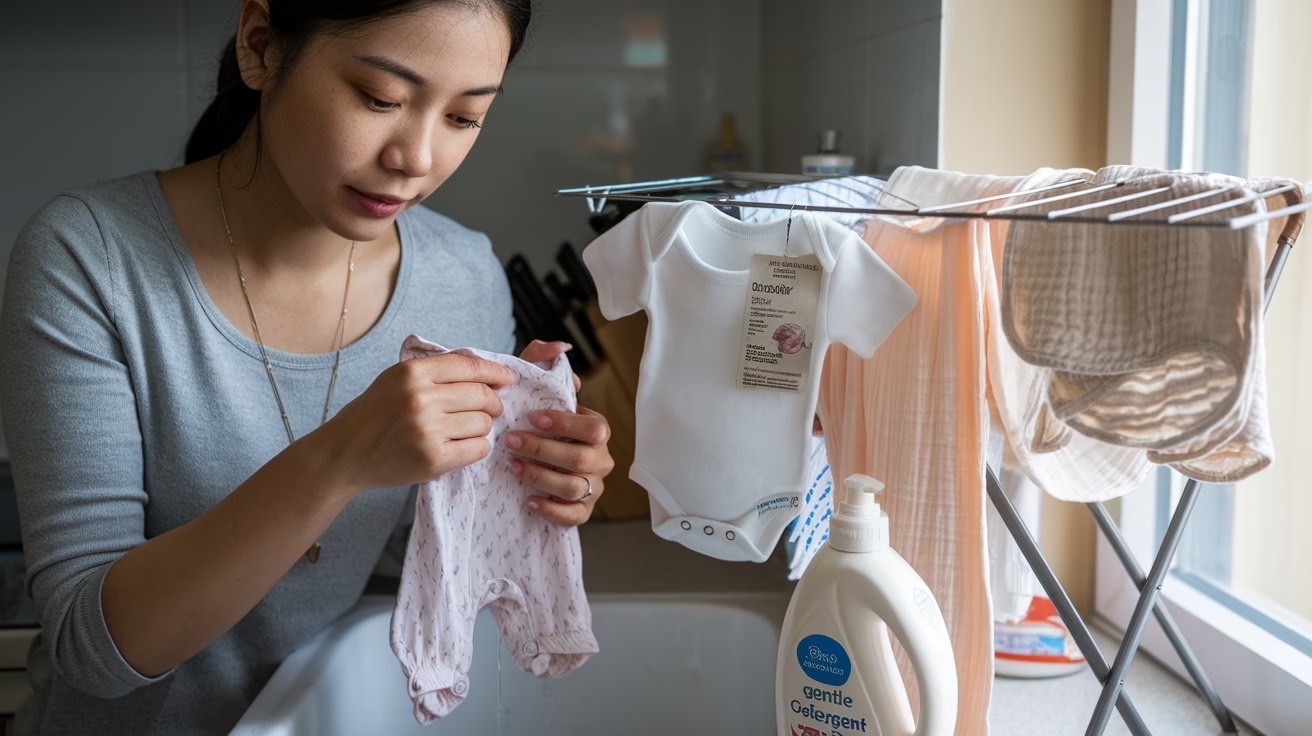
Introduction
When it comes to dressing our little ones, comfort is everything. In fact, did you know that newborns spend about 16-18 hours a day sleeping? This makes the clothing they wear crucial for their well-being! Affordable newborn clothing manufacturers understand this need and have developed innovative ways to ensure that every fabric, stitch, and design element serves to keep babies comfortable. Let’s dive into how these manufacturers balance cost with comfort, creating the perfect clothes for your baby’s delicate skin.
View more: The Ultimate Guide to Sourcing Eco-Friendly Fabrics for Baby Wear
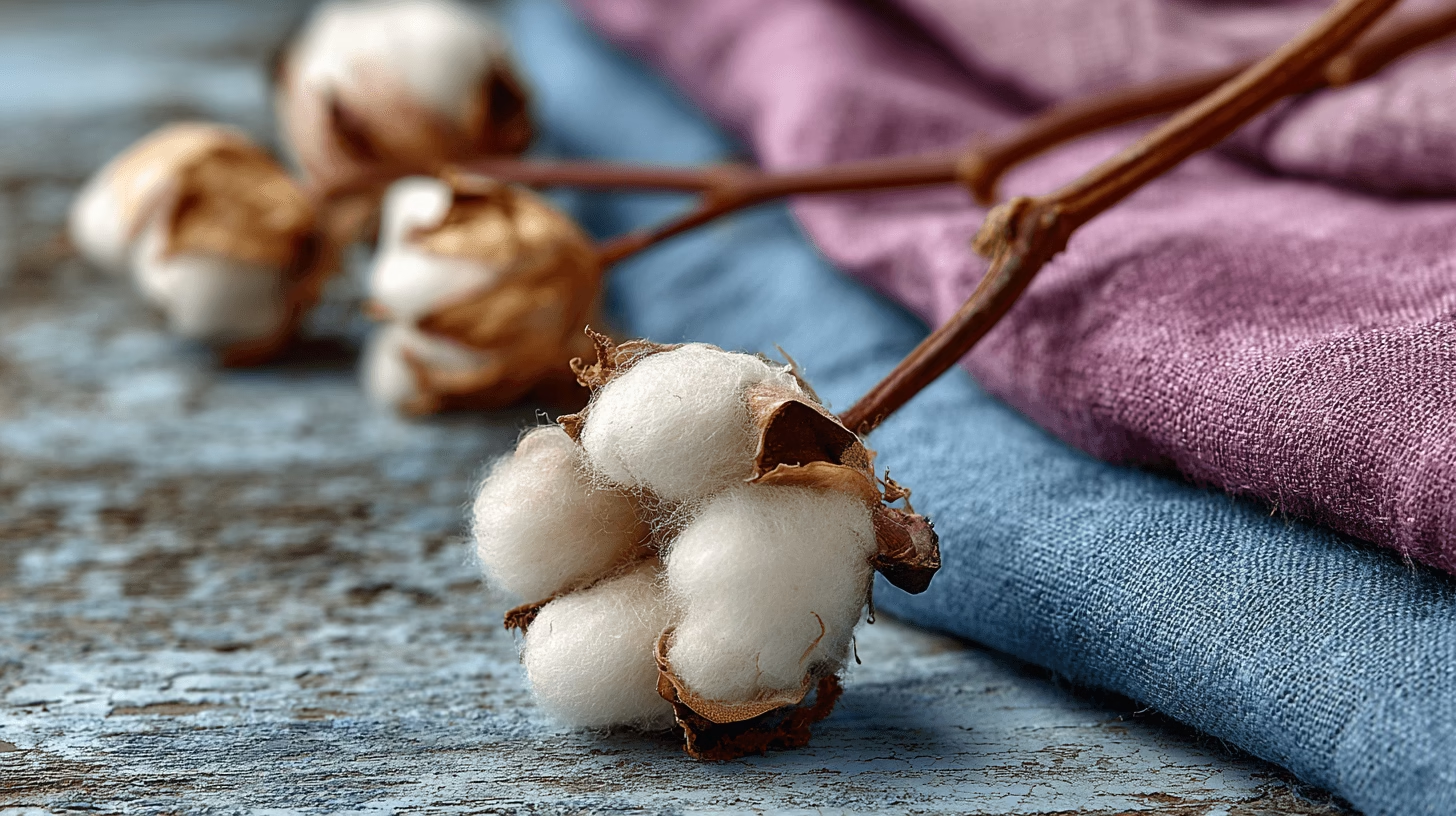
The Importance of Comfort in Newborn Clothing
View More:Top 10 Children’s Clothing Manufacturers to Watch in 2025
Why Comfort Matters
When it comes to newborns, their delicate skin and sensitivity make comfort a top priority. Newborns are growing at an astounding rate, and their skin is far more fragile and sensitive than that of older children or adults. If you think about how much time babies spend in clothes, it becomes clear that comfort is not a luxury, but a necessity. Babies need clothing that doesn’t irritate their skin, restrict their movements, or cause discomfort during sleep, play, or diaper changes. Without soft, breathable fabrics, babies can experience rashes, discomfort, and disturbed sleep, which can affect their overall well-being.
The need for comfort goes beyond just the fabric choice. It’s also about how the clothes fit, move, and adjust to their growing bodies. Tight or restrictive clothing can lead to skin chafing or hinder their movements. That’s why newborn clothing manufacturers prioritize these details to ensure that each piece provides the utmost comfort.
Key Features of Comfortable Clothing
Comfortable newborn clothing should have several key features. First and foremost, the fabric must be soft and gentle to touch, ensuring that it won’t cause skin irritation. Fabrics like cotton are typically used because of their natural softness. Tagless labels are another important feature—those tiny labels in the neck or back area can cause itching or irritation. That’s why many manufacturers opt for tagless designs to keep baby’s skin irritation-free.
Another aspect to consider is the design of the clothing. Clothes should not be too tight or too loose. A stretchy, non-restrictive design that accommodates a baby’s movements is ideal, allowing them to move freely without feeling cramped. These design elements ensure that babies are not only comfortable but also safe as they wear their clothing day in and day out.
Benefits for Baby Health
The right clothing can make a huge difference in the health of your baby’s skin and overall well-being. By choosing clothing made of soft, breathable fabrics, parents can help prevent skin rashes and discomfort caused by sweating or friction. Breathable fabrics, like cotton, ensure that your baby’s body stays cool in the summer and warm in the winter, while also allowing moisture to evaporate, reducing the risk of heat rashes.
Additionally, non-restrictive, adjustable designs contribute to the baby’s physical comfort and promote healthy development. Clothes that fit well without being too tight or too loose ensure that babies are comfortable while sleeping, moving, and playing.
View More:How Bulk Ordering Summer Kids’ Clothing Can Save Your Business Money in 2025
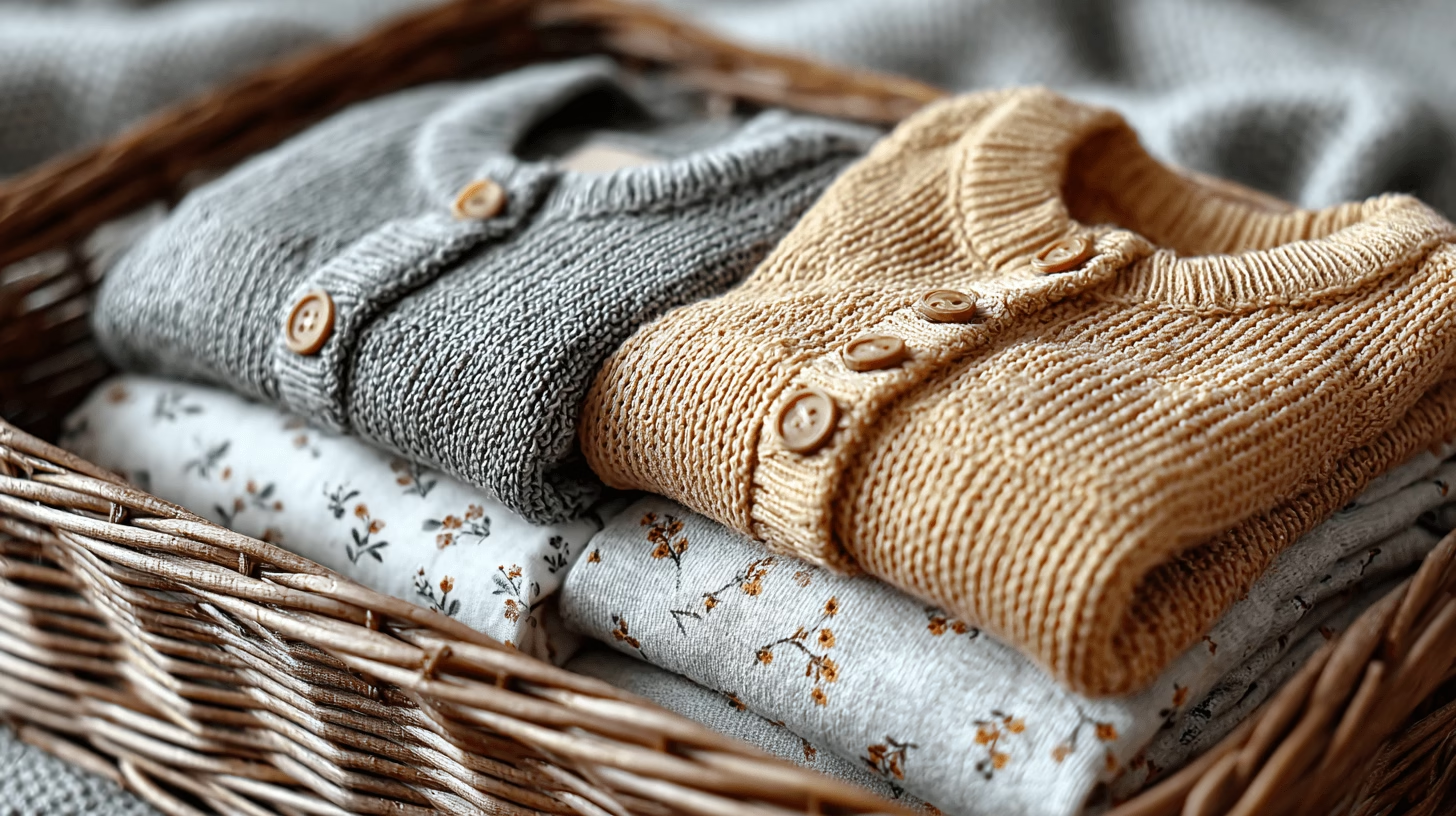
How Affordable Manufacturers Balance Comfort and Cost
Material Sourcing
Affordable newborn clothing manufacturers know that parents want the best for their babies without breaking the bank. One of the ways they balance cost and comfort is by sourcing high-quality, cost-effective materials that provide the best of both worlds. Organic cotton is one of the most popular fabrics used in affordable baby clothes. Not only is it incredibly soft and breathable, but it is also a sustainable option that is free from harmful chemicals, making it perfect for a baby’s sensitive skin.
Another great option is bamboo fabric. Bamboo is not only naturally soft and hypoallergenic but also moisture-wicking, meaning it helps keep babies dry and comfortable. Bamboo also has natural antibacterial properties, which is a bonus for babies with sensitive skin.
By sourcing these affordable yet high-quality materials, manufacturers can ensure that the clothes are both cost-effective for parents and gentle on babies’ skin.
Cost-Effective Production Techniques
Manufacturers use modern technology and efficient production processes to keep costs low while still providing comfort. Mass production techniques allow manufacturers to produce clothing in bulk, which reduces the per-unit cost of production. Automated machinery and streamlined production methods help maintain consistent quality, ensuring that each item is made to the same high standards.
Additionally, some manufacturers leverage partnerships with fabric suppliers, ensuring that they receive high-quality fabrics at a reduced cost due to bulk purchasing. These partnerships allow them to pass on savings to the consumers while still maintaining product quality.
Quality Assurance
Quality assurance is a critical part of the manufacturing process. Even when producing affordable clothing, manufacturers are committed to ensuring that the garments meet safety, comfort, and durability standards. Rigorous testing is conducted on each batch of clothing to ensure that they are free from harmful chemicals, safe for babies, and able to withstand repeated washing.
Affordable newborn clothing manufacturers understand that comfort shouldn’t be compromised, even on a budget. They prioritize quality and safety testing, making sure the clothes are durable enough to withstand the wear and tear that comes with daily use while also remaining soft and breathable for the baby.
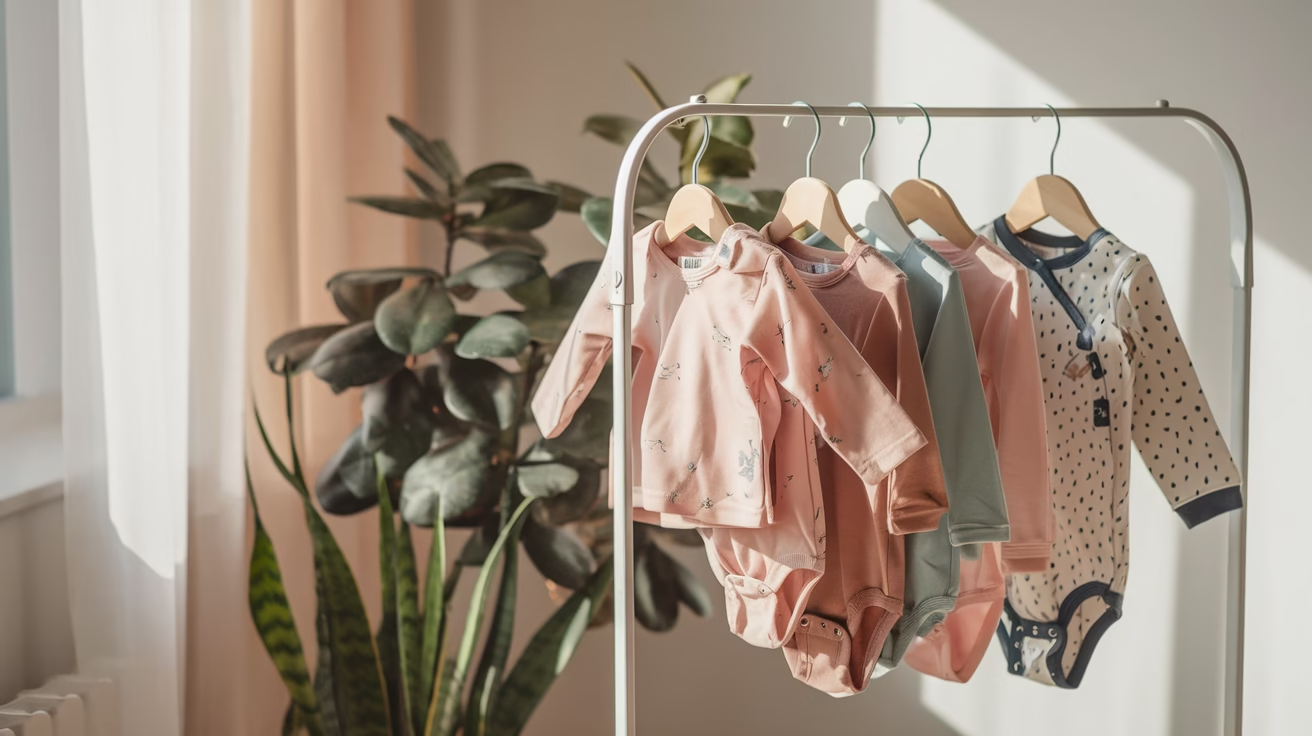
Design Innovations for Enhanced Comfort
Adaptive Designs for Growing Babies
One of the biggest challenges for newborn clothing manufacturers is designing clothes that fit well as babies grow quickly. Affordable manufacturers often incorporate adaptive features into their clothing designs, such as adjustable waistbands, stretchy fabric, and snaps that can be adjusted to accommodate a baby’s growth. These features ensure that clothes are comfortable throughout the baby’s early months and can be worn for longer periods of time without needing to buy new clothes.
This type of adaptive design is especially beneficial for parents looking to maximize the longevity of their baby’s wardrobe without having to constantly replace clothing as their baby grows.
Soft Seams and Labels
Another key aspect of newborn clothing design is the treatment of seams and labels. Standard clothing seams can be harsh and abrasive, causing irritation to a baby’s delicate skin. To combat this, affordable manufacturers often use flat seams or soft, encased seams to reduce the risk of discomfort.
Additionally, tagless clothing designs have gained popularity. Tags in the back of shirts or pants can cause itching, irritation, or even skin rashes. Many manufacturers now opt for tagless designs, which ensures a smooth and comfortable fit without any annoying labels.
Breathability and Temperature Regulation
Breathable fabrics are a must for newborns, as babies’ body temperature can fluctuate easily. Clothing that helps regulate body temperature ensures that babies remain comfortable no matter the weather. Manufacturers often choose fabrics like cotton and bamboo, which are both breathable and moisture-wicking.
These materials help keep babies cool in hot weather and warm in cooler temperatures. Temperature regulation is vital for babies, as they are more vulnerable to environmental factors than adults, and well-designed clothing can prevent overheating or getting too cold.
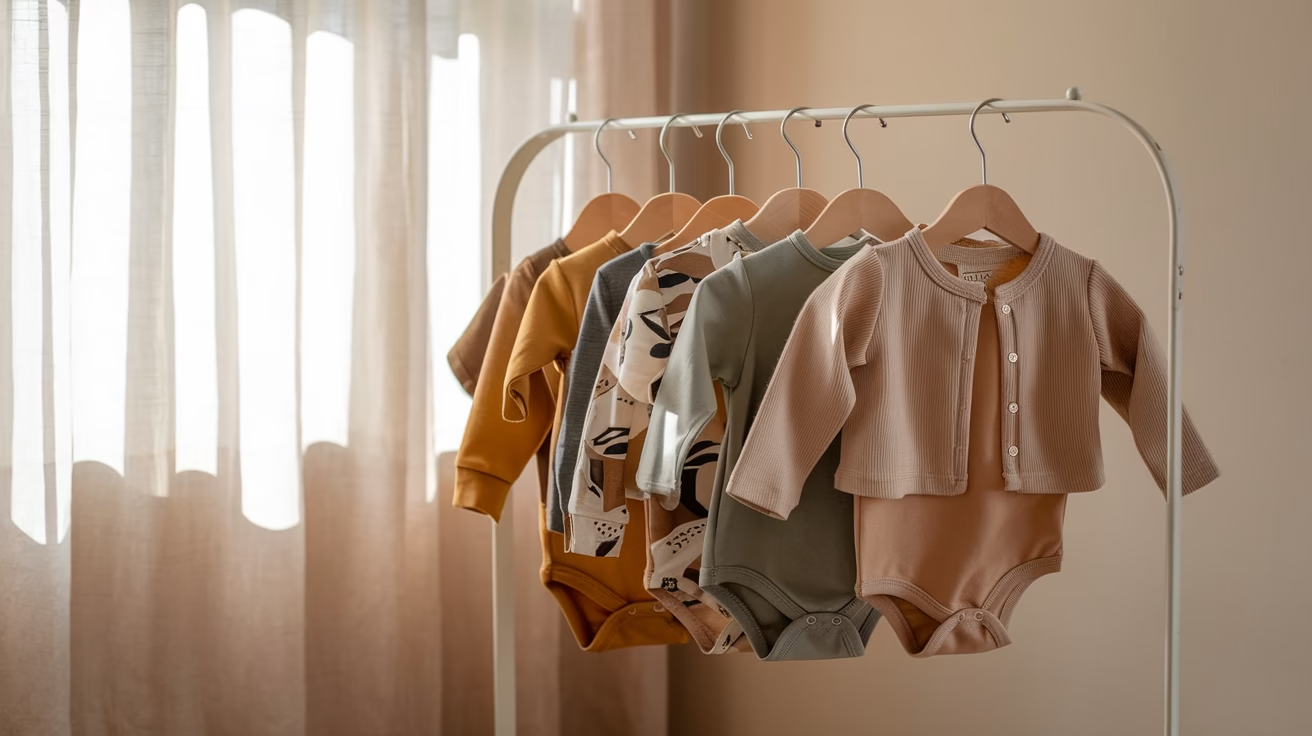
Popular Materials Used by Affordable Newborn Clothing Manufacturers
Cotton: The Go-To Fabric for Its Softness, Breathability, and Affordability
When it comes to newborn clothing, cotton remains one of the most widely used materials. It’s not only budget-friendly but also incredibly soft and breathable, making it the perfect fabric for baby garments. Cotton has long been favored for its ability to regulate body temperature, keeping babies comfortable in both warm and cool environments. Its natural fibers allow air to circulate around the skin, preventing overheating and allowing sweat to evaporate, which is especially important for babies who can easily become too warm or too cold.
Another major advantage of cotton is its hypoallergenic properties. Unlike synthetic fabrics that can cause irritation or allergic reactions, cotton is gentle on sensitive skin, making it ideal for newborns. In addition, cotton is easy to care for—it’s machine washable and durable, which makes it a great choice for parents looking for both comfort and practicality.
Cotton-based fabrics also come in various forms, such as jersey knit or organic cotton. Organic cotton, in particular, is grown without harmful pesticides and chemicals, providing an added layer of protection for babies with extra-sensitive skin.
Bamboo Fabric: A Sustainable Choice Known for Its Natural Softness and Moisture-Wicking Properties
Another fabric gaining popularity among affordable newborn clothing manufacturers is bamboo fabric. Bamboo is a highly sustainable material, requiring little water and no pesticides to grow, which makes it an environmentally friendly option. It’s also incredibly soft, often compared to silk, making it gentle and soothing against a baby’s delicate skin.
Bamboo fabric has remarkable moisture-wicking properties, which help to keep babies dry and comfortable, especially during sleep or active play. It naturally draws moisture away from the skin and promotes airflow, reducing the risk of rashes or discomfort caused by sweating. Bamboo is also naturally antibacterial, which means it can help to reduce the growth of odor-causing bacteria, keeping the clothing fresher for longer.
Bamboo’s eco-friendly nature combined with its skin-friendly qualities makes it an excellent choice for parents looking for affordable yet high-quality baby clothing. Bamboo clothing is often blended with cotton or spandex to enhance durability and stretch, giving babies more comfort and flexibility.
Organic Fabrics: Benefits of Using Organic Cotton and Other Materials for Sensitive Skin
Organic fabrics are an increasingly popular option among affordable newborn clothing manufacturers. Unlike conventional fabrics, organic materials are grown without the use of synthetic fertilizers, pesticides, or genetically modified seeds. This results in a cleaner, more natural fabric that is better for the environment and gentler on sensitive skin.
Organic cotton, for example, is grown with a focus on sustainability and environmental responsibility. It is free from harsh chemicals, which makes it an excellent option for babies with extra-sensitive skin prone to rashes or allergic reactions. The soft texture of organic cotton provides the ultimate comfort for babies, and it is breathable enough to regulate their body temperature effectively.
Other organic materials, such as hemp or organic bamboo, can also be used in baby clothing. These fabrics retain many of the same benefits as organic cotton, including softness, breathability, and hypoallergenic properties. Organic fabrics are an ideal choice for parents who want to invest in eco-friendly and safe clothing for their newborns.
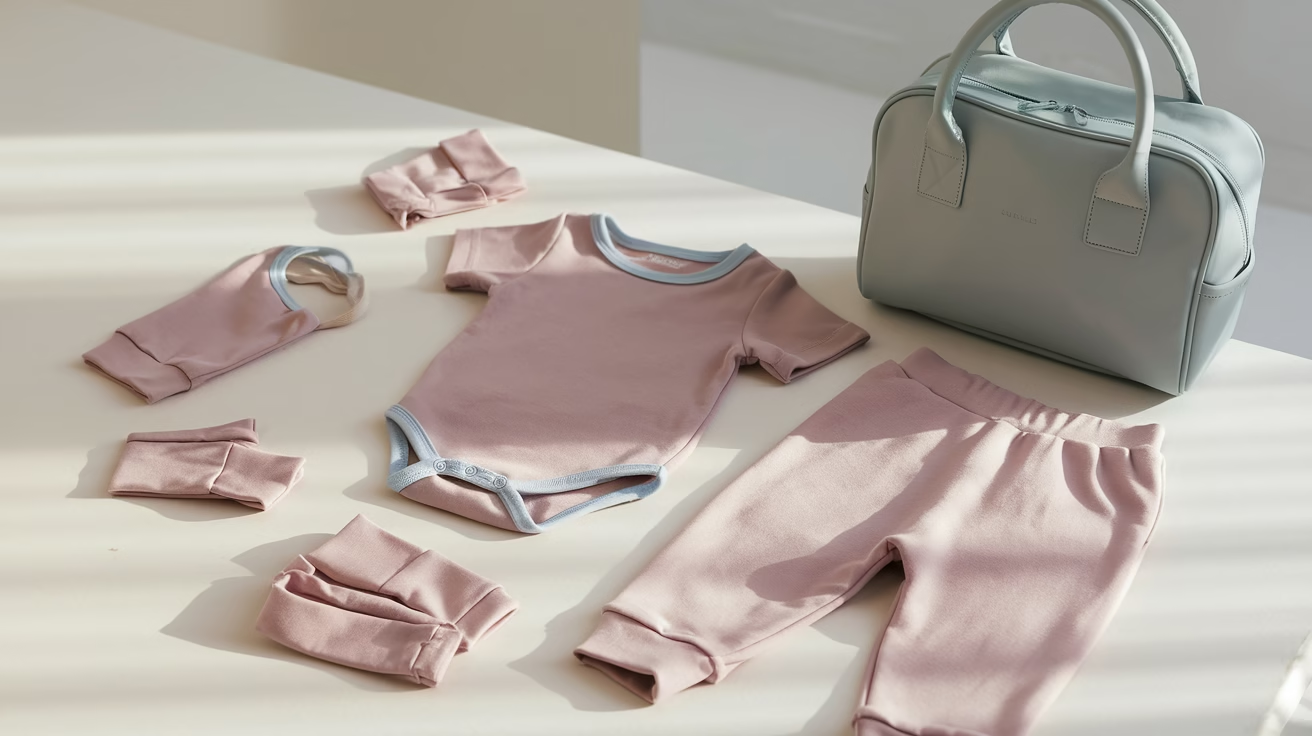
Testing and Safety Standards for Baby Clothing
Safety Regulations: How Newborn Clothing Manufacturers Adhere to Global Safety Standards
When it comes to baby clothing, safety is of utmost importance. Affordable newborn clothing manufacturers are required to adhere to strict safety standards to ensure their products meet both local and international guidelines. Many manufacturers follow safety regulations set by organizations such as the Consumer Product Safety Commission (CPSC) in the United States or the European Union’s safety standards.
One of the most important standards is the use of non-toxic dyes and materials. Baby clothing manufacturers are prohibited from using harmful chemicals or substances that could potentially harm the baby’s skin or health. The OEKO-TEX® Standard 100 certification is often used by reputable manufacturers to ensure that their clothing is free from harmful chemicals. This certification verifies that each garment has been tested for toxic substances, ensuring they are safe for babies to wear.
In addition to chemical safety, baby clothes are also tested for sharp objects such as buttons or zippers that may pose a choking hazard. These safety measures help give parents peace of mind, knowing that the clothing they purchase meets rigorous safety standards.
Allergen-Free Materials: The Importance of Hypoallergenic and Non-Toxic Fabrics in Baby Clothes
Babies are particularly vulnerable to allergens, and their sensitive skin can easily react to harsh chemicals, dyes, or synthetic fabrics. For this reason, allergen-free materials are essential in newborn clothing. Affordable manufacturers understand this need and often use natural fabrics like organic cotton, bamboo, and hemp, which are less likely to cause allergic reactions.
Hypoallergenic fabrics are designed to minimize the risk of irritation and allergic reactions, making them a safe choice for babies with sensitive skin or existing skin conditions like eczema. Many hypoallergenic fabrics are free from the harmful chemicals and synthetic materials commonly found in conventional fabrics, which helps reduce the risk of skin irritation, rashes, or other adverse reactions.
Non-toxic dyes are also a priority for newborn clothing manufacturers. Since babies often put their hands in their mouths or rub their faces against clothing, it’s important to use dyes that are safe and free from heavy metals or other harmful substances.
Durability and Comfort Testing: How Clothing is Tested for Comfort and Wearability Over Time
Even though affordability is key, comfort and durability should never be sacrificed. That’s why affordable newborn clothing manufacturers conduct extensive testing to ensure their products hold up well over time. These manufacturers perform wear and tear tests on their clothing to ensure the fabric retains its softness, color, and elasticity after multiple washes.
Durability tests typically focus on the stitching, fabric strength, and the elasticity of materials. For example, clothing with weak stitching can easily unravel, causing discomfort for the baby and possibly leading to safety issues. Manufacturers ensure that their clothing is designed with strong, long-lasting seams that won’t tear easily. Similarly, fabrics are tested to ensure they retain their shape and softness even after frequent washing, as babies tend to go through multiple changes of clothes each day.
Comfort testing also includes assessing how the clothes feel against the skin. This involves checking for rough seams, tight spots, and overall fabric smoothness to ensure that babies are not irritated or uncomfortable while wearing the garments.
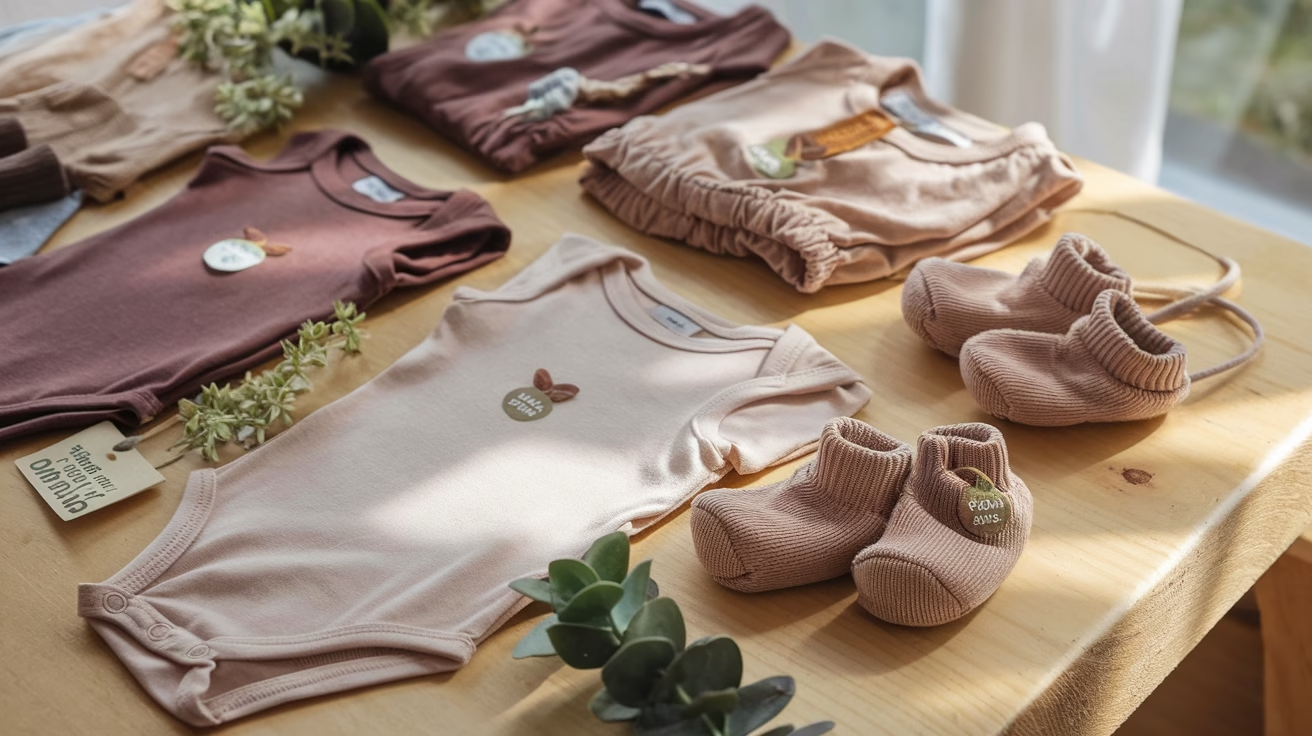
Conclusion
Affordable newborn clothing manufacturers play an essential role in providing comfort while remaining budget-friendly for parents. By using soft, breathable materials and focusing on smart design features, these manufacturers ensure that babies feel cozy all day long. Parents don’t have to choose between price and quality—there are plenty of affordable options that don’t skimp on comfort. When shopping for your little one, remember to check for brands that prioritize both comfort and safety!
Affordable baby clothing doesn’t have to be uncomfortable, and by understanding the materials, design innovations, and safety standards behind these garments, you can confidently choose clothes that provide the best comfort for your newborn without compromising on price.
FAQs
1. What materials are best for newborn clothing?
Cotton, bamboo, and organic fabrics are some of the best materials for newborn clothing due to their softness, breathability, and hypoallergenic properties.
2. Are affordable newborn clothes safe?
Yes, many affordable newborn clothing manufacturers adhere to strict safety regulations, using non-toxic dyes and hypoallergenic materials that are safe for babies’ sensitive skin.
3. Can newborn clothes be machine washed?
Most newborn clothing made from cotton or bamboo fabrics is machine washable, making it easy for parents to care for the clothes while ensuring they remain soft and durable.
4. How can I ensure the comfort of my baby’s clothes?
Look for clothes with tagless labels, soft seams, and stretchy, non-restrictive designs. Also, choose fabrics like organic cotton or bamboo that are gentle on the skin.
5. Is it necessary to buy organic baby clothes?
While organic baby clothes are a great choice for sensitive skin, non-organic cotton and other fabrics can still be safe and comfortable, as long as they are free from harmful chemicals and allergens.
Petelulu is Your Best Partner for Starting Your Kids’ Clothing Line
If you’re looking for a reliable clothing manufacturer for your children’s clothing line, Appareify will be your top choice. Here is why we can relieve stress for your kids’ clothing business:
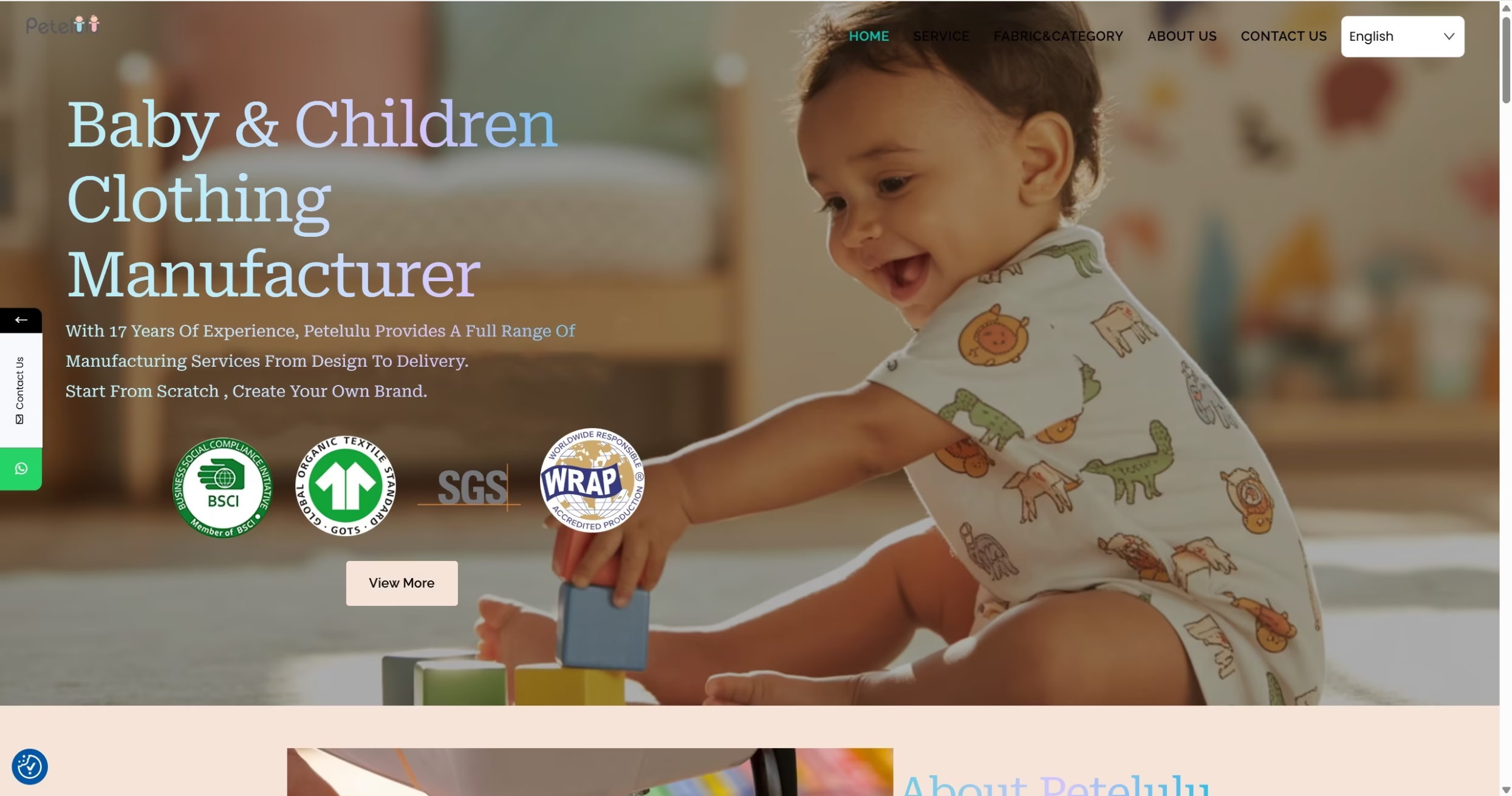
Custom Children’s Clothing Manufacturer
Appareify is a leading clothing manufacturer that has assisted many businesses with their own range of bespoke clothing. We can create children’s clothing tailored for your style and material needs
Experienced Production & Team
Partner with Appareify and benefit from our years of clothing manufacturing expertise. Our professional design and production experts can easily turn your business ideas into reality.
Sustainable Commitment
We use biodegradable materials and fabrics to turn your ideas into reality sustainably. You’ll get children’s clothing that is friendly to the environment.
About the author
Xhiney, founder of Petelulu, brings over 20 years of experience in children’s wear design, production, and international trade. A contributor to Children’s Wear and Junior magazines, Xhiney has spent 17 years working with high-end children’s wear brands in Europe and the U.S., offering expert insights and support.
